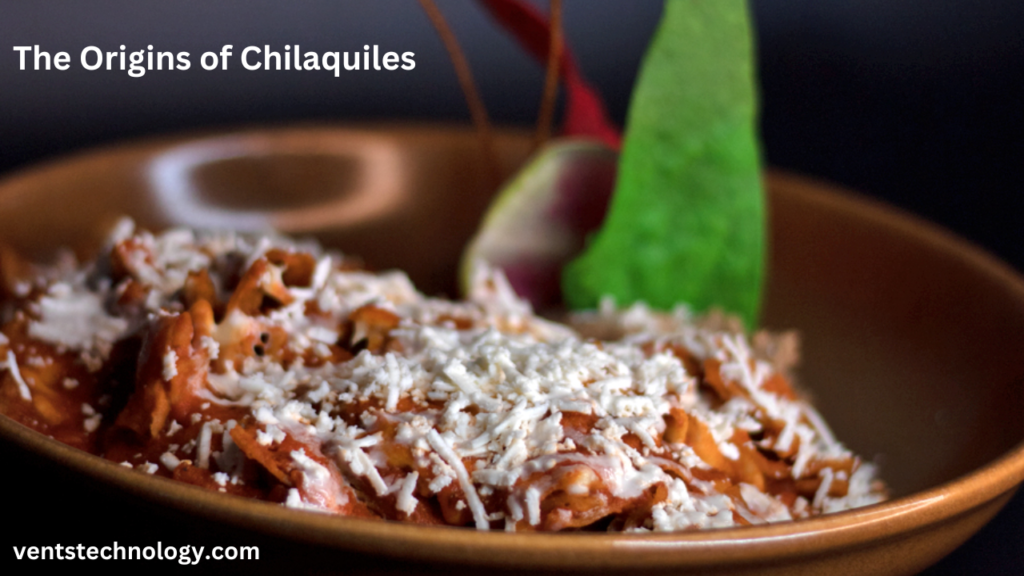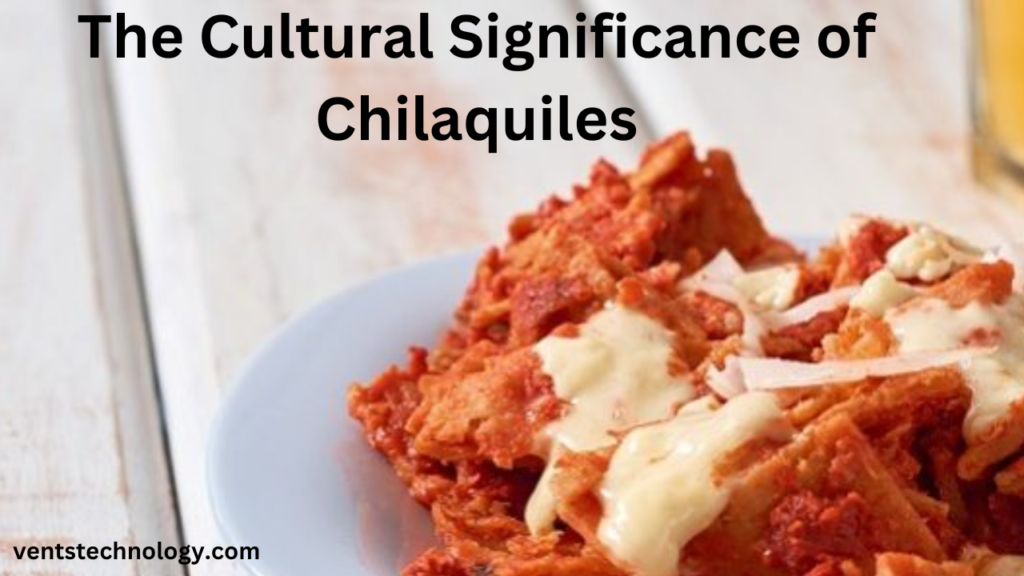Table of Contents
Chilaquiles, a beloved dish in Mexican cuisine, offer a vibrant celebration of flavors and traditions that resonate with history and culture. This savory, versatile dish, typically enjoyed for breakfast or brunch, is more than just a meal; it’s a culinary experience that encapsulates the essence of Mexican comfort food. In this article, we’ll explore the origins, variations, cultural significance, and modern interpretations of chilaquiles, along with tips on how to celebrate this delectable dish.
The Origins of Chilaquiles

The story of chilaquiles is deeply rooted in Mexican history, dating back to the indigenous cultures of Mesoamerica. The term “chilaquiles” derives from the Nahuatl language, spoken by the Aztecs. In Nahuatl, “chīlālli” refers to “chili,” and “quilitl” means “greens” or “herbs,” which combined translates to “chili and greens.” Originally, chilaquiles were a way to utilize stale tortillas, a staple in Mesoamerican diets, by transforming them into a flavorful, savory dish.
In traditional settings, chilaquiles were made using corn tortillas cut into small pieces and then fried or baked until crispy. These crispy tortilla pieces, or “totopos,” were then simmered in a sauce made from tomatoes, chili peppers, and various spices. The result was a hearty, comforting meal that utilized readily available ingredients while minimizing waste.
The Evolution of Chilaquiles
Over time, chilaquiles evolved as they spread throughout Mexico and beyond. In contemporary Mexican cuisine, the dish has diversified into numerous regional variations, each with its unique twist. While the classic version remains popular, variations include different types of sauces, toppings, and accompaniments.
In northern Mexico, for example, chilaquiles are often made with a green sauce known as “salsa verde,” which is made from tomatillos, green chilies, and cilantro. This version is typically tangy and slightly spicy. In contrast, the central and southern regions of Mexico might feature “salsa roja,” a red sauce made from ripe tomatoes, red chilies, and various spices, resulting in a richer, more robust flavor.
Ingredients and Preparation
To create a perfect plate of chilaquiles, you’ll need a combination of fresh ingredients and traditional techniques. The basic components include:
- Tortillas: Corn tortillas are preferred for their authentic texture and flavor. They are cut into triangles and either fried or baked until crispy.
- Sauce: The sauce can be red or green, depending on personal preference and regional traditions. Each sauce typically involves blending tomatoes or tomatillos with chili peppers, garlic, onions, and spices.
- Accompaniments: Common toppings include crumbled queso fresco, sour cream, chopped onions, cilantro, and a sprinkle of fresh lime juice. Additional ingredients like fried eggs, shredded chicken, or avocado can elevate the dish further.
Preparation Steps:
- Make the Sauce: Prepare the sauce of your choice by blending the tomatoes or tomatillos with chili peppers and other seasonings. Simmer the mixture to develop its flavors.
- Prepare the Tortillas: Cut the tortillas into bite-sized pieces and fry or bake them until they are crispy.
- Combine: Toss the crispy tortilla pieces in the sauce, allowing them to soak up the flavors while retaining some crunch.
- Garnish: Top with your choice of garnishes and serve immediately for the best texture and taste.
Regional Variations
- Chilaquiles Verdes: This variation uses a green sauce made from tomatillos. It’s typically tangy and slightly spicy, offering a refreshing contrast to the crispy tortillas.
- Chilaquiles Rojos: Made with a red sauce, this version is richer and spicier, often incorporating roasted tomatoes and red chilies. It’s a heartier option with deep, complex flavors.
- Chilaquiles with Mole: In some regions, chilaquiles are served with mole sauce, adding a layer of richness and depth with its complex blend of spices and chocolate.
- Chilaquiles with Pork: Adding shredded pork, such as carnitas, can make the dish more substantial and satisfying. This variation is particularly popular in central Mexico.
The Cultural Significance of Chilaquiles

Chilaquiles hold a special place in Mexican culture, often associated with family gatherings and celebratory breakfasts. Traditionally served on weekends or special occasions, this dish symbolizes comfort, hospitality, and the joy of sharing a meal with loved ones.
In Mexican homes, preparing chilaquiles is often a communal activity. Families come together to cook, share recipes, and enjoy each other’s company. The dish’s ability to adapt to various tastes and dietary preferences makes it a versatile choice for celebrations, whether it’s a casual family brunch or a festive holiday gathering.
Modern Interpretations and Trends
As Mexican cuisine gains popularity worldwide, chilaquiles have become a staple in many international food scenes. Chefs and home cooks alike are experimenting with new ingredients and techniques, bringing fresh perspectives to this classic dish.
- Healthier Versions: With an increasing focus on health and wellness, there are now lighter versions of chilaquiles that use baked instead of fried tortillas and incorporate fresh, organic ingredients. Additionally, vegan and vegetarian adaptations replace traditional animal products with plant-based alternatives.
- Fusion Cuisine: The fusion of Mexican flavors with other culinary traditions has led to innovative interpretations of chilaquiles. For instance, some restaurants offer chilaquiles topped with ingredients like smoked salmon, poached eggs, or even international sauces.
- Gourmet Chilaquiles: High-end restaurants are elevating chilaquiles by using artisanal tortillas, specialty sauces, and gourmet toppings. This modern approach highlights the dish’s versatility and allows it to be enjoyed in a refined dining experience.
How to Celebrate Chilaquiles
Celebrating chilaquiles can be as simple or elaborate as you like, depending on the occasion. Here are some ideas for making your chilaquiles celebration memorable:
- Host a Chilaquiles Brunch: Invite friends and family over for a chilaquiles-themed brunch. Offer a variety of sauces, toppings, and side dishes so guests can customize their plates. Accompany the meal with fresh fruit, Mexican pastries, and a selection of beverages, such as fresh juices or coffee.
- Cookbook and Recipe Sharing: Share your favorite chilaquiles recipes with friends and family through a homemade cookbook or online blog. Include tips for making perfect chilaquiles and stories about your personal experiences with the dish.
- Chilaquiles Tasting Party: Organize a tasting event where participants sample different versions of chilaquiles. Include various sauces, toppings, and side dishes to showcase the diversity of this iconic dish.
- Cooking Class: Offer a cooking class to teach others how to make chilaquiles from scratch. This hands-on experience can be a fun way to share your passion for the dish and introduce others to the joys of Mexican cuisine.
- Cultural Celebration: Incorporate chilaquiles into a broader celebration of Mexican culture, including traditional music, dance, and decorations. This immersive experience highlights the cultural significance of the dish and fosters a deeper appreciation for its roots.
Conclusion
Chilaquiles are more than just a dish; they are a celebration of Mexican culinary tradition, creativity, and community. From their humble origins to their modern interpretations, chilaquiles offer a flavorful journey through Mexican culture and history. Whether enjoyed in a traditional setting or with a contemporary twist, chilaquiles embody the essence of Mexican comfort food and provide a delicious way to connect with the rich heritage of this vibrant cuisine.
As you explore the world of chilaquiles, embrace the opportunity to experiment with different ingredients, techniques, and variations. By celebrating chilaquiles, you honor a beloved culinary tradition while creating new memories and connections with those around you.
Pingback: The Artificial Intelligence Transformation in Medical